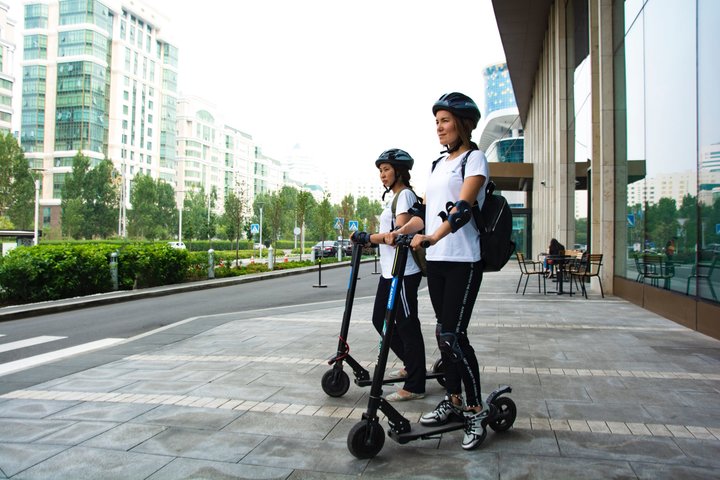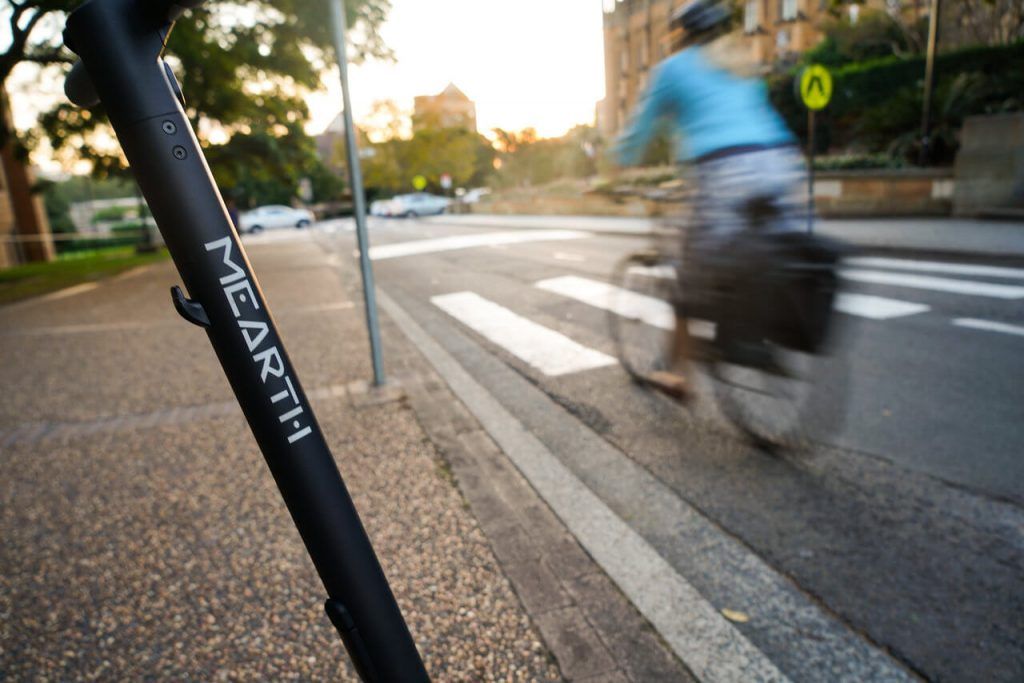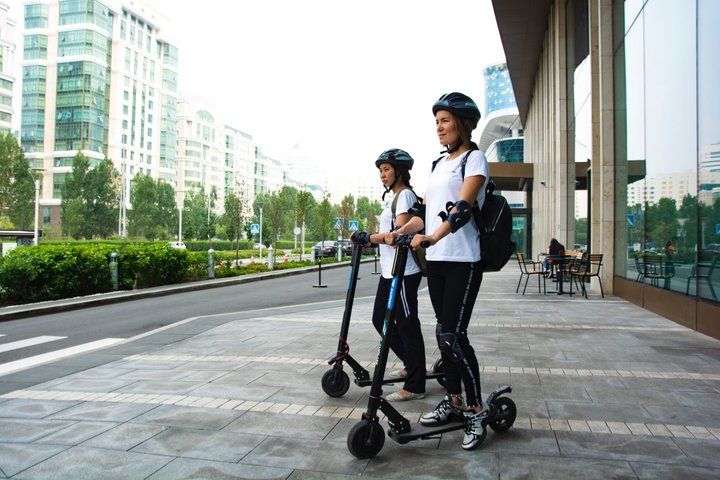
Throughout history, the electric scooter has appeared in the streets without warning. It’s a persistent idea that comes and goes, driven by novelty, misspent youth, and the inventors who saw the potential in it. Two centuries later, the electric scooter finally found its niche as personal transport for commuters.
Where did the electric scooter come from exactly? How did it conquer city streets of the world?
The Early Years
The origin of the electric scooter is hard to pinpoint. In black and white photos from pre-World War 1, a crude toy can be seen being pushed around by children. It’s a plank with two wheels. Adults and kids tinkered with the wooden kickscooter until someone had the mind to put a motor on it. And the mode of travelling upright finally began.
In the 1900s the Autoped Company made the first mass-produced motorized e-scooter. The Autoped was an “enlarged child’s scooter with an engine mounted over the front wheel” and can be folded. It has an air-cooled 155cc four-stroke engine that claims to have a top speed of 48 km/h but became unsteady at 32 km/h. Eveready Battery Co bought the Autoped Company in 1918 and fitted a battery coil to the machine, creating the first electric scooter version – Eveready Autoped.
The Autoped spread throughout Europe and the US. It was adopted by the US Post Office, used by New York gangsters, and became a fixture in high-society. Advertising copies featured fashionable women speeding on an electric scooter without a helmet. In spite of this, it did not gain widespread acclaim and existed as a novelty.
Several companies made their iterations in the following decades. ABC Motorcycles introduced the seated single-cylinder rear-wheel powered Scootmota in the 1920s. Honda made the rear-pedalled Kick n’ Go kick scooter for kids in 1974. Patmon Motor Werks invented the gasoline-powered Go-Ped.
All the while, the electric scooter wasn’t seen as an essential vehicle for mass public transport. Rather, it was a quirky gadget to use when you don’t want to walk.
The ’90s E-Scooter Craze
Scooters finally gained worldwide attention in the ‘90s.
Legend has it that Swissman Wim Ouboter had a lightbulb moment when he wanted to get his sausage fix. Zurich’s Sternen Grill was too far for a walk but to close for a bike ride. His first two-wheeled creation was essentially the modern version of the wooden kickscooter. This iteration, however, got shelved until Ouboter launched Micro Mobility Systems in 1999, thanks to the success of his second creation – a three-wheeled kickboard.
The demand for his scooters got so high he allowed his Taiwanese production partner to distribute it in the United States under the name “Razor”. The Razor became a worldwide phenomenon. Ouboter saw the genius behind the scooter early on, but his design didn’t exactly lend itself for public transport. The e-scooter craze dialled down in the 2000s but he continued to manufacturer electric scooters for kids.
The Millenium Evolution
At the turn of the millennium, the electric scooter found its way in a well-intended but poorly executed iteration.
Dean Kamen debuted The Segway PT in 2001, a self-balancing electric scooter. It did not look like the sleek gizmo that people expected. It was heavy, awkward, clumsy, and guaranteed to make you look like a joke. It didn’t take off but it did spawn other ideas like the hoverboard and electric unicycle.
In the following decades, the electric scooter existed in the periphery of the automobile industry. Like the rest of its history, e-scooters came and went in lesser-known models made by little known companies. It took improvements in battery technology and a serial entrepreneur for the electric scooter to take over the world the second time.
The Modern Electric Scooter Takes Over the World
Travis VanderZanden credits his children for the idea of his company. He gifted his daughters with bikes for Christmas in 2016. But the next day all they wanted was to ride their e-scooters. VanderZanden thought if you attach a motor on this thing would grown-ups like it too? He ordered adult scooters from Chinese manufacturers in Alibaba and took it for a spin with his wife in the boardwalks of San Diego. It immediately caught attention. Naturally, he did what any entrepreneur would do.
VanderZanden took a bunch of Xiaomi M365 electric scooters and installed it with a minicomputer (Bird brain). The “Bird brain” is connected to the company’s software platform, where they can see the location of their machines, lock the wheels and motor, and throttle it remotely.
The Bird e-scooter sharing scheme appeared in Santa Monica, California by September of 2017. The electric scooter cost $1 to unlock and 15-30 cents to ride per minute. Customers can rent it via an app.
Much like the Autoped, Bird Rides caused mayhem. Citizens illegally cruised on sidewalks without a helmet at 24 km/h. Teenagers ignored traffic rules. Pedestrians tripped on abandoned scooters. The mayor was not amused.
Regardless, e-scooter sharing schemes popped up one after another. Like Bird, other companies like Lime and Neuron spread from city to suburb. Electric scooters spread all over the world and found its way to Australia.
The Perfect Commuter Electric Scooter
Mearth Technology had always seen electric scooters as personal transport. Hailing from a city where the parking rates can make your eyes water, we saw a crucial need for better transport tools. While VanderZanden was tweaking Xiaomis we were refining our electric scooter design for Australian commuters specifically.
Our innovations are not meant to be the next coolest gadget or the next biggest business venture. It is designed to be the next most essential thing to meet people’s transport needs and help the environment.
In fact, by September, we will be releasing our newest model, the Mearth S Pro. It’s a long-range 45-kilometre commuter electric scooter with a high-end Panasonic one-click removable battery and 10-inch armoured tires. Cruise up to a top speed of 32 km/h and get where you need to go in no time.
The electric scooter has come a long way. It’s a long-gestating project that has finally found its place in personal mobility. Dean Kamen proclaimed that the Segway PT would be the ultimate urban transport vehicle. While he did not succeed, electric scooters have fulfilled that role, nearly two decades later.




Leave a comment
This site is protected by hCaptcha and the hCaptcha Privacy Policy and Terms of Service apply.